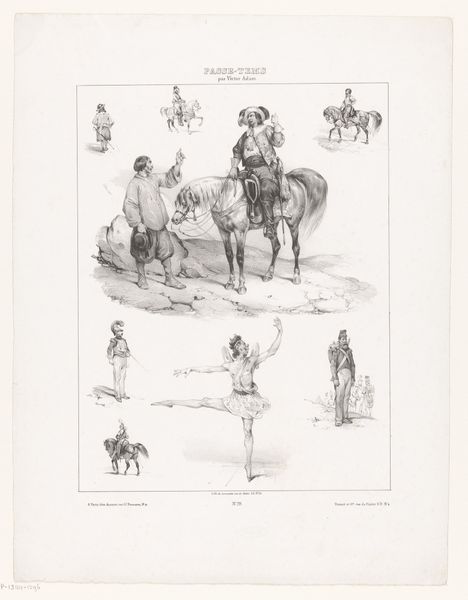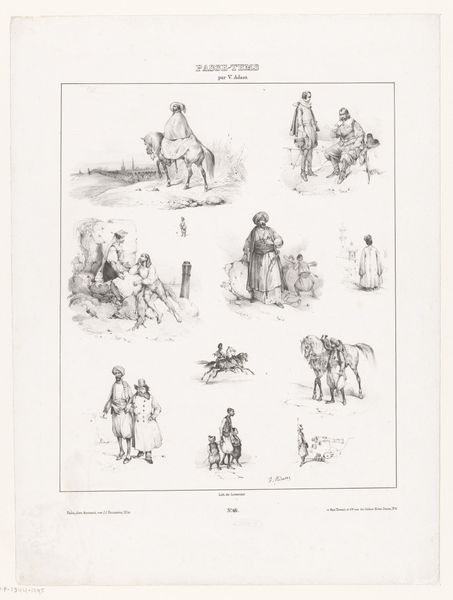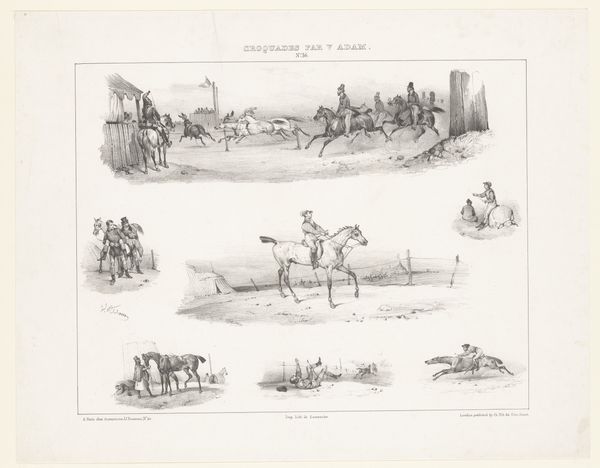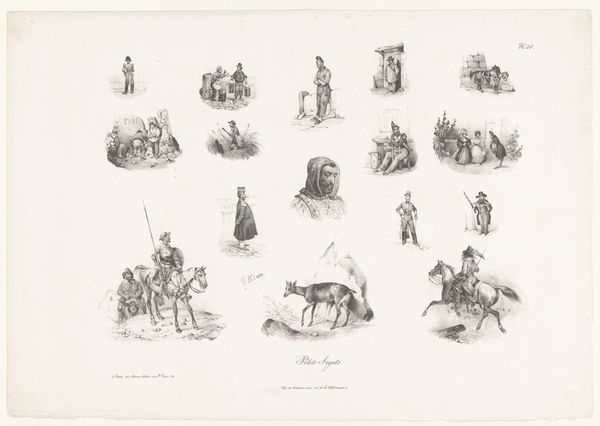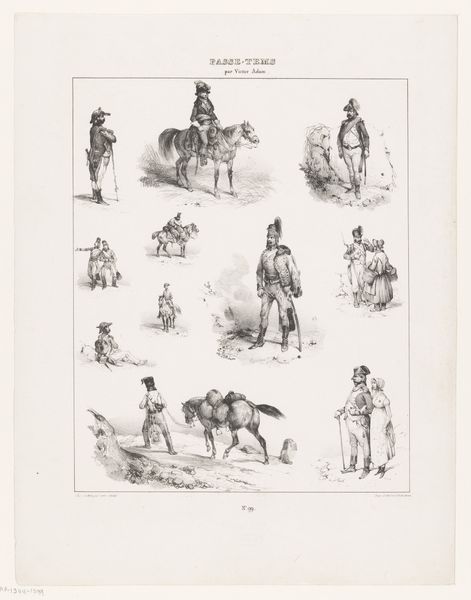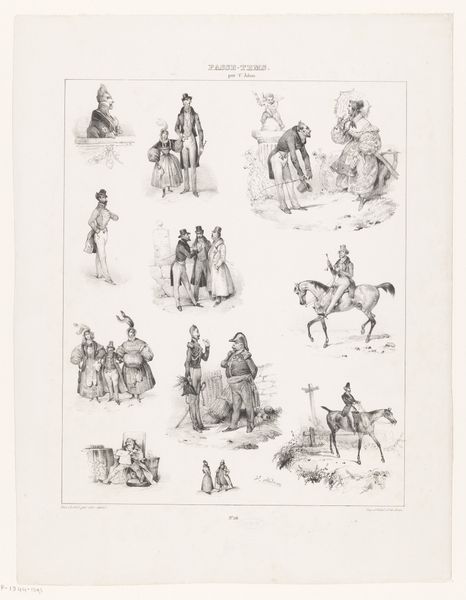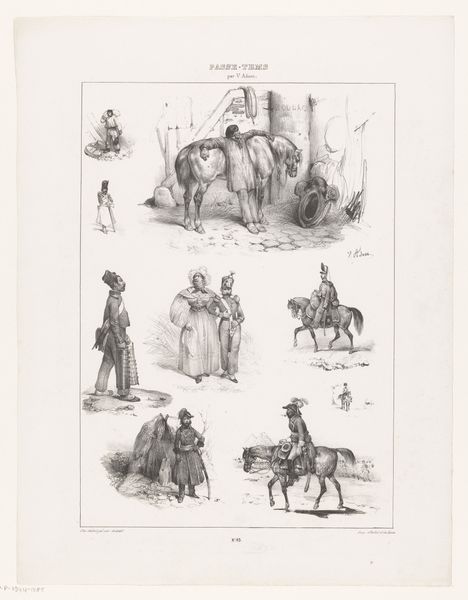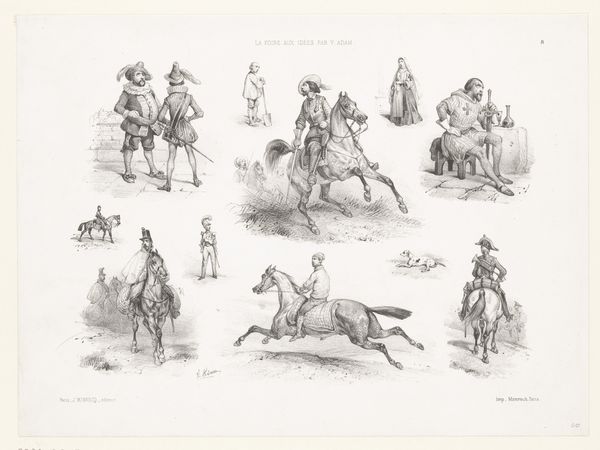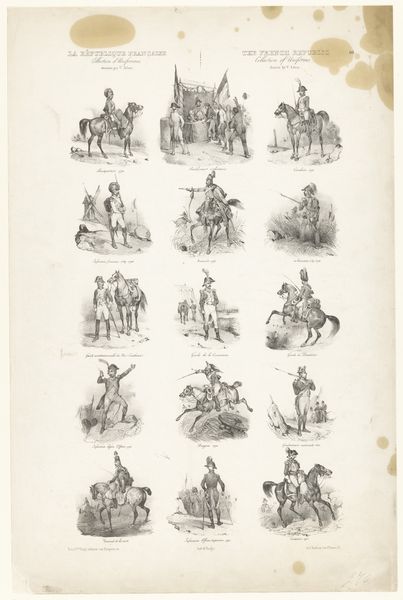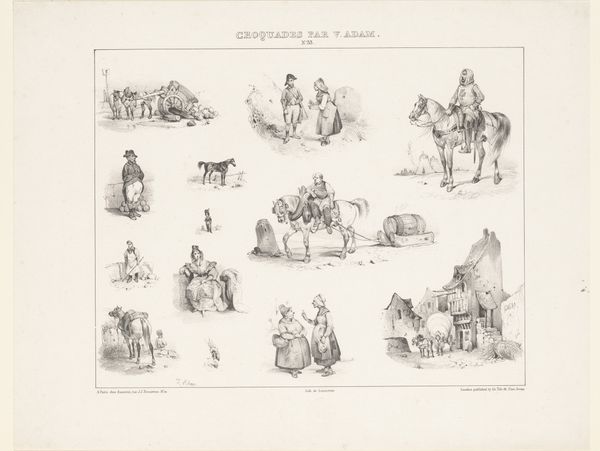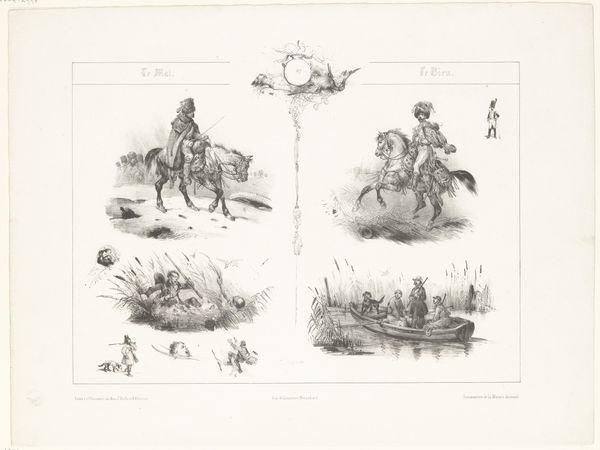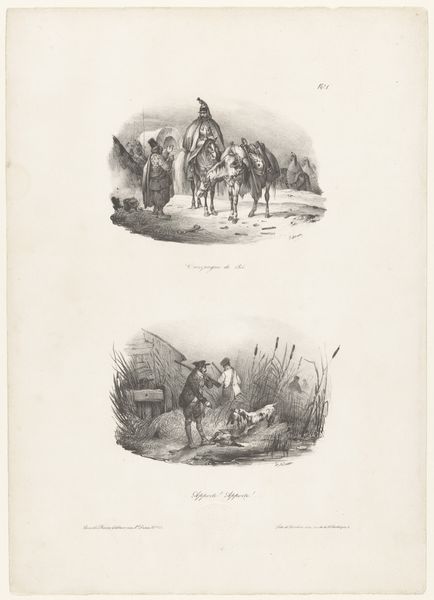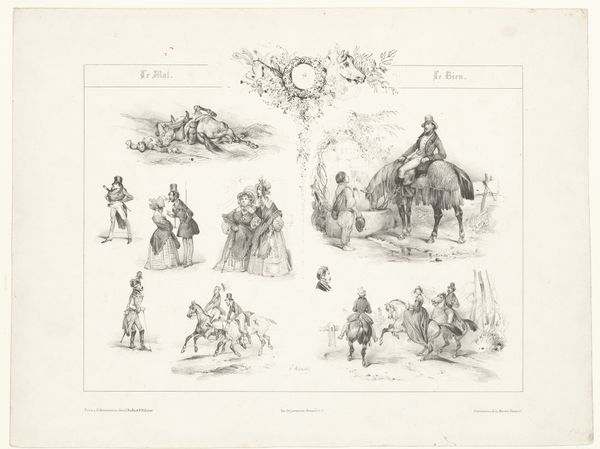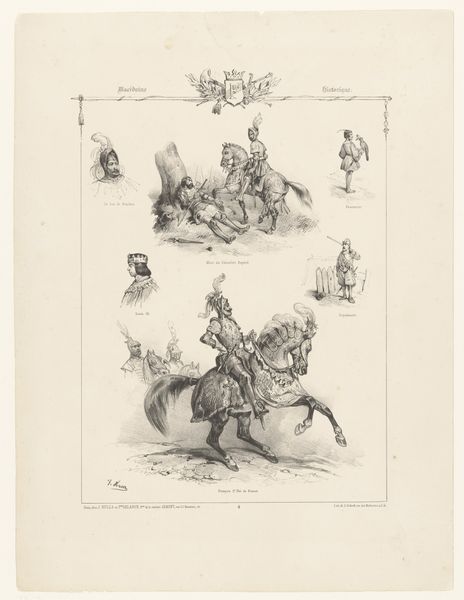
drawing, lithograph, print, ink
#
drawing
#
narrative-art
#
lithograph
# print
#
pen sketch
#
landscape
#
ink
#
romanticism
#
cityscape
#
genre-painting
Dimensions: height 365 mm, width 278 mm
Copyright: Rijks Museum: Open Domain
Editor: This is "Five Presentations of Human Pastime" by Victor Adam, a lithograph from between 1833 and 1837. It gives off the vibe of a study—almost like an anthropologist meticulously cataloging scenes of everyday life. What can you tell me about the culture surrounding this kind of depiction? Curator: That's a sharp observation! Victor Adam created this during a time of immense social change. Notice how each scene focuses on transportation and leisure: the grand carriage, the officers on horseback, even figures clustered around a well. Consider that printmaking, like lithography, democratized imagery. How do you think making scenes like these available to a wider audience, compared to painted artworks that only elite could possess, influenced societal views on class and leisure? Editor: So, it's not just about documentation but also about disseminating these images more widely? Making these forms of leisure and the social structures visible. Curator: Precisely. The politics of imagery are critical here. Who is being represented? Who is consuming these images? During the 19th century, prints like these shaped perceptions, even aspirations, amongst different social strata. The scenes suggest access, or perhaps aspiration, toward travel, commerce, even military distinction. Do you notice any deliberate social commentary embedded within the scenes? Editor: Well, there's a hierarchy visible, definitely, the officers contrasted with people simply getting water for their horses. I guess it’s interesting to think of these not just as slices of life but as arguments about how society *should* be seen, maybe even structured. Curator: Exactly! These works became vital cultural tools. Consider their influence on shaping a collective vision of 19th-century Europe. Editor: Wow, I never considered the agency behind what felt like simple observation before. Curator: Art is almost never simple, is it? Always think of who it is serving.
Comments
No comments
Be the first to comment and join the conversation on the ultimate creative platform.
